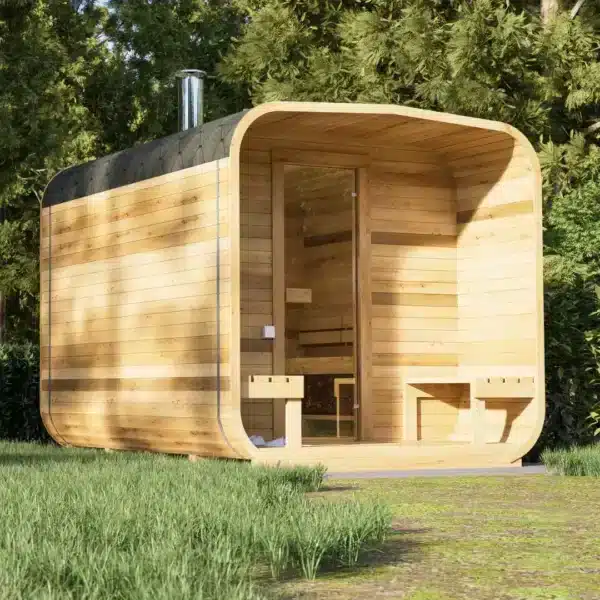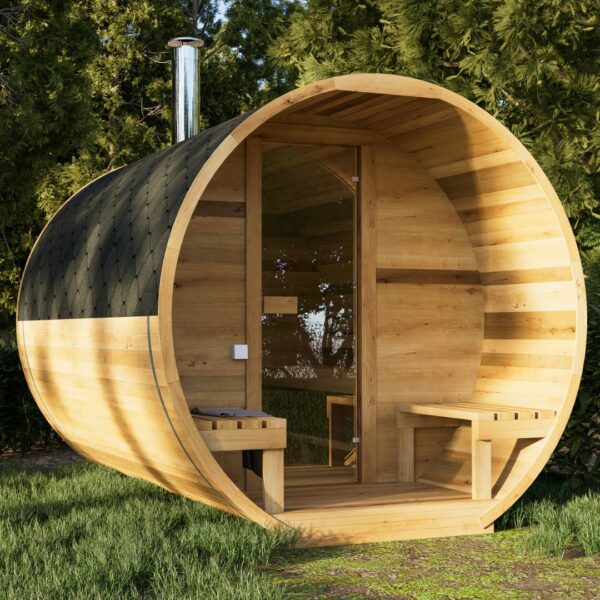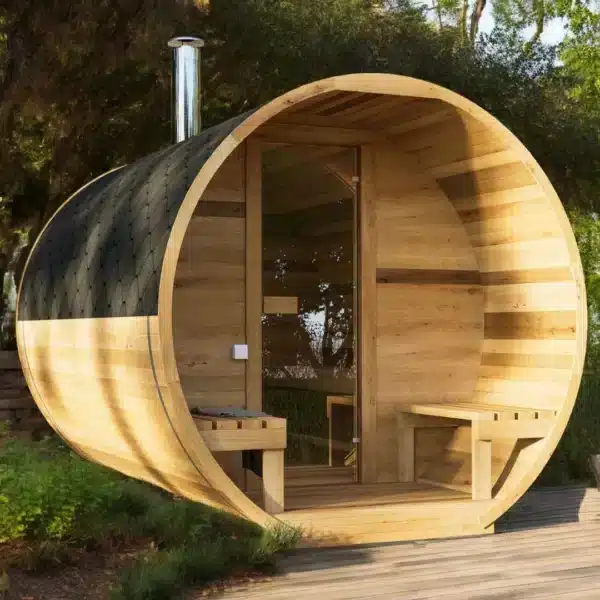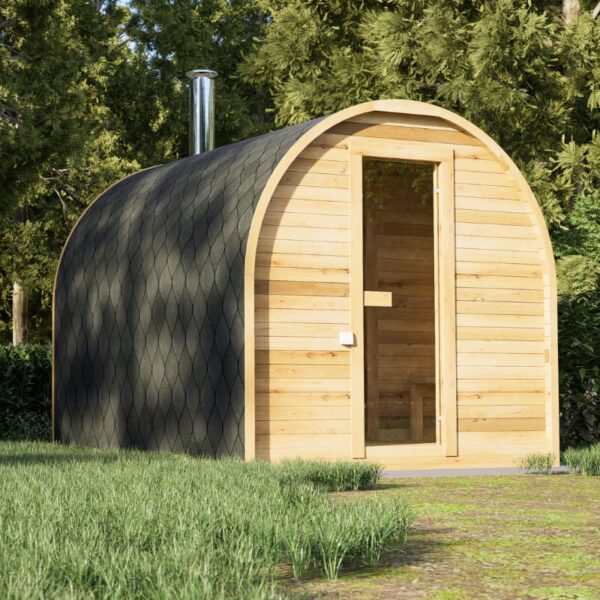No products in the cart.
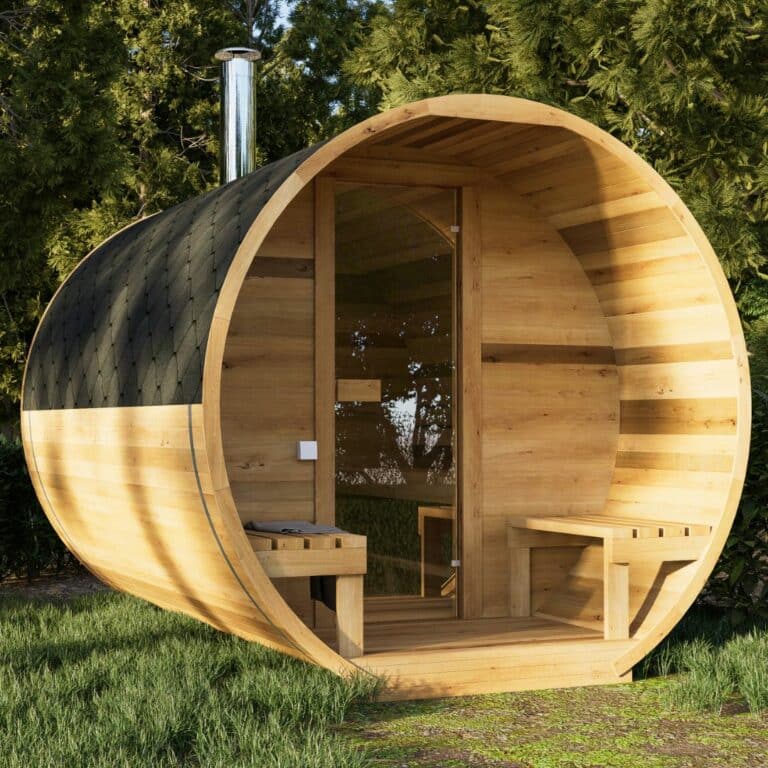
Have you ever thought about adding an outdoor sauna to your home? A place where you can relax, sweat and forget about the stresses of the day? In this article, we'll go over everything you need to know about outdoor saunas, from the benefits to the different types and how to maintain them.
An outdoor sauna is a sauna designed specifically for outdoor use. It offers a unique way to enjoy the sauna experience while surrounded by nature.
The sauna originated in Finland, where it has been an important part of the culture for thousands of years. Traditionally, saunas were used for both hygiene and social interaction.
Over the years, the sauna has evolved from simple wooden cabins to sophisticated outdoor saunas using modern technologies and materials.
The traditional Finnish sauna uses wood-fired stoves and offers an intense heat and steam experience.
Infrared saunas use infrared radiation to heat the body directly, providing deeper and faster warming.
These saunas use wood as fuel, offering an authentic and rustic sauna experience.
Popular wood species are cedar, spruce and hemlock because of their durability and resistance to moisture.
Good insulation is crucial for retaining heat and making the sauna energy efficient.
From traditional wooden cabins to modern glass structures, there are plenty of designs to choose from.
Choose a place that offers enough privacy and is easily accessible from your home.
Check local regulations and make sure you have all the necessary permits before you begin construction.
Start with a lower temperature and gradually increase it. Hydrate well and take breaks between sessions.
Keep the sauna clean and check regularly for signs of wear and tear.
Ventilate the sauna after each use and periodically treat the wood with a protective oil.
Regular use of the sauna can help improve circulation, relieve muscle pain and promote detoxification.
A session in the sauna can reduce stress, improve sleep quality and promote general relaxation.
Studies show that regular sauna visits can contribute to improved cardiovascular health and longevity.
Although outdoor saunas can be more expensive initially, they often offer better long-term value thanks to their durability and lower maintenance costs.
Outdoor saunas offer a unique experience through the combination of heat and the natural environment.
Advantages include increased privacy and aesthetic value, while disadvantages may include higher installation costs and weatherization.
In Finland, it is common to take a cold bath or roll in the snow between sauna sessions.
In Russia, saunas are called "banya" and are often a social event, while in Japan, "onsen" thermal baths are popular.
Many modern saunas are equipped with technological gadgets such as sound systems, LED lighting and aromatherapy.
Choose woods from sustainably managed forests and consider recycled materials for construction.
Modern outdoor saunas are often designed with energy-saving features such as efficient insulation and programmable heaters.
Use environmentally friendly cleaning products and avoid excessive use of water and electricity.
Costs can vary depending on the type of sauna, size and materials chosen.
Expect costs for regular cleaning, stove stone replacement and any repairs.
Consider DIY installations or buy a used sauna to save costs.
It is recommended to use the sauna 2-3 times a week for optimal health benefits.
Yes, if properly installed and maintained, an outdoor sauna is safe for use.
Depending on the type of heater, it can take between 30 minutes and an hour to heat up the sauna.
An outdoor sauna offers the perfect combination of relaxation and health benefits, all within the comfort of your own garden. Whether you choose a traditional Finnish sauna or a modern infrared sauna, the benefits are numerous. Invest in an outdoor sauna and enjoy the ultimate home spa experience.
With proper maintenance, an outdoor sauna can easily last 15-20 years.
Yes, an outdoor sauna can be a great experience even in winter, especially with the combination of cold air and hot steam.
Consider additional features such as LED lighting, a sound system or aromatherapy for a luxurious experience.
Use mild detergents and avoid harsh chemicals that can damage the wood.
Yes, in addition to the health benefits, an outdoor sauna can increase the value of your home and be a unique selling feature.
